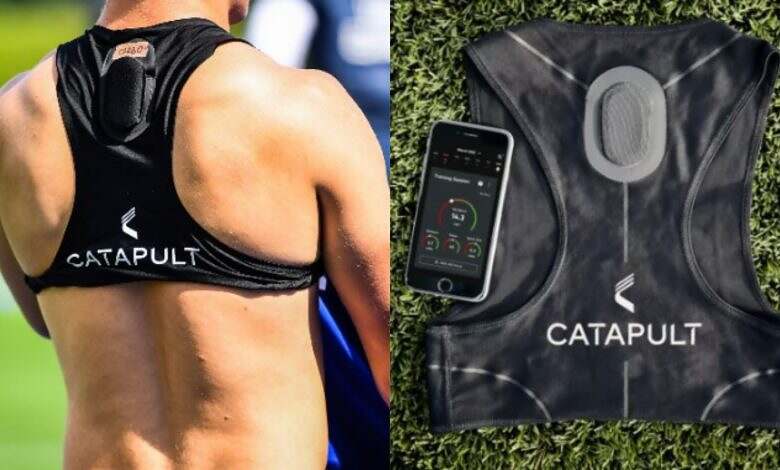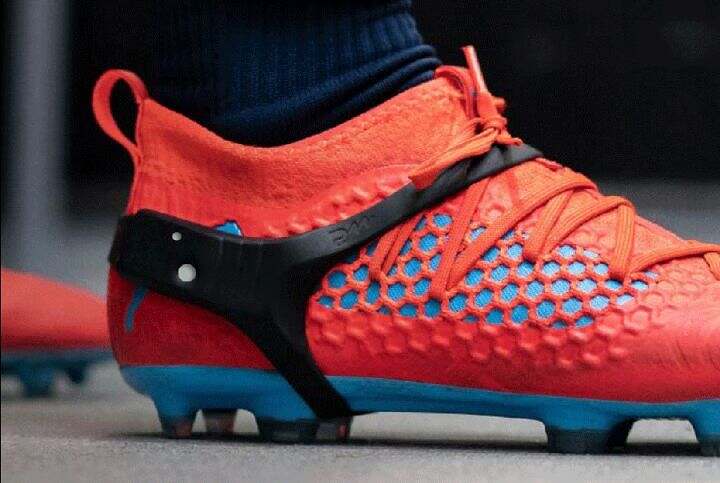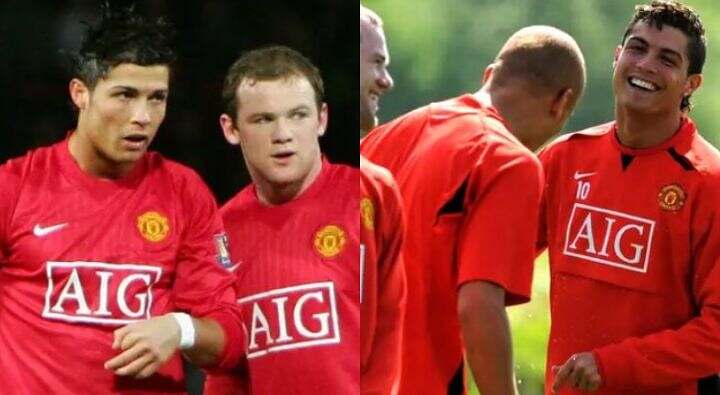The Rise of AI and Wearable Tech in Football: How 2025 Is Revolutionizing Player Performance

Football used to be simple in description, a pitch, a ball, eleven players on each side, and a coach with a clipboard. Talent, Tactics and luck also matters.
But in 2025 you can’t talk seriously about top-level football without talking about data, wearables, and algorithms.
They don’t replace the basics, they sit beside them, whispering in the ear of the coach, nudging training sessions, and sometimes saving a player from a bad injury.
Trending
You’ll hear old-school managers say these things complicate the game. You’ll hear modern, data-first coaches say they make the game safer and better. Both views are true.
The change feels sharper now because the tools are better, cheaper, and more widely used than ever.
The neat thing and the uncomfortable thing is that the tech keeps getting smarter.
In 2025 it feels less like a novelty and more like a core part of how clubs operate and how players live.
The Evolution of Football Tactics: From Chalkboards to AI
If you’ve been following football for a while, you remember the tape and the VHS analysis days. Boards with magnets, hand-drawn lines for shape drills, and a lot of gut feeling.
Then came GPS trackers, simple heart-rate monitors, and database spreadsheets. Those were the first real steps.
What changed was twofold. First, clubs started hiring people who weren’t ex-pros or ex-coaches, data scientists, software engineers, even people who used to work in aerospace and automotive analytics.
They brought a different language models, machine learning, feature engineering and slowly those ideas seeped into training grounds. Second, wearables got better.
What used to be a clumsy GPS brick the size of a cigarette box became a thin pod, smart boots, or biometric bands that can track load, direction, power, and tiny physiological signs that hint at fatigue.
Training and recovery stopped being guesswork. It became measurable. That shift didn’t happen overnight, but by 2025 it feels normal, the old clipboards are still there, but they’re often sat under an iPad running a dashboard.
The Invisible Kit: What Players Are Wearing Underneath

Modern wearables are discreet. On matchday you don’t notice much, a thin vest under the shirt, a small GPS pod, sensors in boots, sometimes a band on the wrist.
In training you’ll see more, smart insoles, recovery compression with embedded tech, and sleep trackers linked to team nutrition and recovery staff.
Big clubs are obvious users. Manchester City runs programs that plug grassroots or academy data into larger analytics systems to spot talent by patterns, not just scouts’ opinions.
That’s not theory, City has been running data-driven talent programs and trials where algorithms help shortlist players for invitations.
Liverpool has worked with AI researchers to build tactical tools that suggest new positional ideas on set pieces, that same type of work shows how far clubs will go with math and geometry to find small advantages.
Google DeepMind’s project with Liverpool produced an AI that suggested better corner positions and saw its ideas favored in testing. Teams now use machine learning to explore tactical tweaks.
At first players were awkward about it. A GPS vest feels clinical. Who wants another metric to worry about?
But many players quickly got hooked, the instant feedback, the proofs that small changes reduce soreness, the way numbers can show they’ve improved.
For younger pros, wearing data is normal. For older players, it’s the new habit they didn’t want but often came to rely on.
How Artificial Intelligence Is Revolutionising Football Training and Injury Prevention
Clubs now use algorithms to fine-tune training loads. The basic idea is simple: too much load = higher injury risk, while too little load = not fit enough.
The hard part is finding the right individual balance. That’s where models help.
They pull in GPS loads, heart rate variability, sleep data, previous injuries, and then estimate risk for muscle strain or fatigue.
There’s growing evidence this works. Reviews of research show AI models can improve the accuracy of injury risk assessments and help tailor prevention strategies to each athlete.
That doesn’t mean injuries vanish, but smart programs can reduce certain muscle and soft-tissue problems by spotting trends the eye misses.
Catapult and similar companies keep updating hardware and software to push that idea further.
New sensor systems launched in 2025 promise higher fidelity in tracking and better integration with weight-room and gym analytics, so the whole training day is connected.
That integration on-field running loads tied to gym strength metrics is what lets coaches make smarter decisions. Teams report meaningful drops in some injury types when they commit to these systems.
This raises the question fans like to throw at pundits: does this make players robots? No. Players still have skill, feel, and a personality.
Tech just reduces avoidable wear and tear and lets a physio or coach make a more informed call. The human still chooses but today the choices are based on more evidence.
Data Doesn’t Lie: How Matchday Tracking and AI Change the Game

During matches, some clubs and broadcasters now see live biometric feeds: sprint speeds, distance covered, occasional heart-rate readouts.
On the bench, staff can receive alerts for example, when a winger’s top speed or number of sprints drops below a threshold.
That kind of nudge can force a substitution you wouldn’t otherwise make until obvious fatigue shows.
AI helps measure complex patterns such as pressing efficiency, line-breaking movement, or space creation.
Instead of just counting passes and tackles, teams can measure how a player’s positioning affects the opponent’s passing lanes.
This kind of analysis is now routine in top clubs. It’s subtle, not everything a machine says is right, but many suggestions are useful and testable.
There are good examples of AI working as a useful assistant on the touchline. The DeepMind-Liverpool work I mentioned earlier is about tactics, other tools are more about physical output.
The value is in real-time context: a player’s sprint capacity might drop because of a knock, heat, or simple fatigue seeing that quickly matters.
Still, instincts and experience are critical. Numbers can guide a decision, but managers often combine what the metrics say with what they see in warming-up, in a player’s eyes, or the feel of a match. The best coaches use data as an extra sense, not the only sense.
Who Really Owns Players’ Data?
This is where things get sensitive. All that biometric data GPS traces, heart rates, sleep patterns is intensely personal.
Who owns it? The club? The player? The tech provider? The law can be fuzzy and it varies by country.
Player unions and legal teams have pushed for rules and frameworks around data collection, storage, and use.
FIFPRO and other bodies have put forward guidelines to protect players’ rights, and lawyers have written about the complex ownership and privacy questions that come with biometric data.
We have seen real scares. Sports organizations have leaked data before contract details and medical info have appeared in security breaches.
That’s the worst-case scenario in football. Imagine a confidential medical record or drug test result going public. Players fear that data could affect contract talks, wages, or a club’s valuation of them.
In Australia and the AFL, players asked for stronger data protection after breaches exposed sensitive details.
That episode gave players and unions more leverage to insist on clearer rules.
So clubs must act responsibly. That means secure servers, limited data access, transparent uses, and ideally written agreements where players understand what will be collected, how it will be used, and who can see it.
The legal advice out there is clear: without proper contract terms, teams often control data simply because they collect it and that’s not a great place for a player to be.
How Data and Wearables Are Changing the Viewing Experience
For fans, this tech shows up in two ways: during broadcasts and in fantasy/betting ecosystems.
Broadcasters can layer biometric info onto coverage heart rates during a big moment, sprint speeds after a run, or live fatigue indicators.
Some viewers love it because it adds colour and tells stories the camera missed. Others say it’s invasive or gimmicky, turning the match into a stats show rather than a fight of wills.
Fantasy platforms and betting companies are also hungry for this data.
Live performance metrics can change fantasy points or feed predictive models that influence odds.
That raises ethical questions: if a player’s biometric flag suggests fatigue, should bookmakers react? If real-time data leaks, fantasy and betting markets could be impacted in unfair ways.
Fans split on this. Many younger supporters embrace the extra layer, they want every stat possible. Older fans prefer the simpler version: who scored, who missed, who stood up.
Both are valid. The data can make viewing richer when used sensibly and sparingly. Too much, and the viewing feel changes from watching people to watching numbers.
Beyond Matchday: AI, Wearables and the Daily Life of Footballers
Today’s footballer is a 24-hour athlete. Wearables don’t stop when the match ends.
Sleep trackers, nutrition apps, mental health tools, and hydration monitors all feed into a player’s daily program.
The better clubs link these pieces so staff see recovery, gym work, on-field load, and daily wellness in one place.
Tech helps identify simple but important things. Short sleep one night can show up as reduced high-intensity distance the next day.
Poor recovery patterns over a week can prompt a change in training load or a rest day. Clubs use these signals to avoid pushing players into danger zones.
There’s also a human side, players sometimes resent being tracked off the pitch. No one likes feeling watched 24/7.
But many accept it as part of the job if the system visibly helps them, fewer knocks, better condition, longer careers.
The balance is tricky, players want privacy, but they also want the marginal gains that can keep them at the top. Teams need clear boundaries and player consent.
How Coaches Balance AI with Human Instinct
There are managers who genuinely like this stuff and those who are wary. Some embrace data and design sessions around it. Others worry it dulls intuition.
It’s natural, coaching is half science, half art. A few things stand out though.
Good managers don’t hand control to algorithms. They use them for extra information, scenarios, and to challenge assumptions. Second, dressing-room trust matters.
If players think their data is being used to bench them unfairly or to sell them short, that trust breaks.
So the best clubs combine clear communication, player involvement, and cautious deployment.
There are teams that make dashboards for players, simple visuals players can access so they don’t feel kept in the dark. That transparency helps.
The human element is still decisive, coaches read spirits, personalities, and moments in ways a model can’t.
But when AI helps a coach say, “I’m swapping you because the numbers back it up,” players often accept it rather than thinking it’s random.
Where Is All This Headed? The Future of Football in 2030
Predicting tech is dangerous, but some trends are obvious.
Expect better on-field sensors, smarter injury prediction models, and tighter integration between clubs’ medical, scouting, and tactical systems.
We’ll also likely see more advanced simulation tools “digital twins” of players that let clubs run scenarios about fatigue, minute-load, and long-term wear.
Some teams already play with simulation systems that estimate outcomes; by 2030 those tools will be more accurate.
Refereeing will keep getting tech help too. AI systems that flag offsides or dangerous tackles could be faster and more precise than current VAR setups.
But there’s a balance, part of the game’s thrill is human judgement. The trick will be using tech to help referees get the hard calls right without stripping the game of spontaneity.
There’s a darker, stranger possibility. What if clubs start relying on simulations to scout and value players, maybe even projecting career trajectories before a player turns 18? That’s both smart and ethically fraught.
Relying on simulations for major contract decisions risks flattening human unpredictability into a curve fit. We’ll need rules and human oversight.
Why Fans Should Care About AI and Technology in Football
This tech matters because it changes who start the game, how long players stay fit, and even how managers plan. It can make the sport safer and more competitive.
But it also asks us to think about what football should be: a battle of skill and heart, or a science experiment in a stadium?
If you love the game, you should want the best for players, longer careers and few minor injuries.
At the same time, you don’t want to lose that, emotional side that makes football great.
The goal should be balance, use tech to protect and enhance human performance, not to replace the unpredictable drama that makes us watch in the first place.
So do we want more science in football? I can say yes. But do we risk killing the magic? Possibly if we stop asking the human questions and start trusting only the numbers.
The best outcome is a partnership: smart data, sensible managers, protected players, and fans who get richer stories without losing the heart of the game.
How Clubs Are Already Using AI in 2025
• DeepMind worked with Liverpool on an AI system that suggested corner-kick positional changes; those suggestions were favoured in testing over existing strategies. That shows AI’s tactical reach is real.
• Catapult and similar firms updated their hardware and announced new athlete-monitoring platforms in 2025 that aim to connect field data with gym and weight-room analytics. That push is closing gaps between on-field loads and strength work.
• Scientific reviews find AI models improve the accuracy of injury risk assessments and help tailor prevention programs to the individual athlete. That’s part of why teams invest in these systems.
• Manchester City runs data programs that use AI to help identify promising grassroots players by pattern recognition, not only by scouts’ eye. That kind of data-first scouting is expanding.
• Player unions and leagues have called for clearer rules around biometric data. High-profile leaks in recent years show the real risk: medical and contract details can be exposed, which pushes players to demand better protections.
If you like football because of the unpredictability, don’t panic. The ball will still surprise you.
The goals will still be messy, beautiful, or ridiculous. But the people on the pitch may be a little smarter about how they train, recover, and manage their bodies.
Tech will keep nudging the sport forward. That’s not bad, but it’s our job as fans to keep asking who benefits, who pays, and where do we draw the line?
What do you think, is football becoming too much of a science, or is this the future we need? Share your thoughts in the comments.






